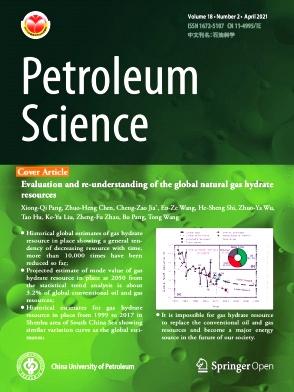Restoration of hydrocarbon generation potential of the highly mature Lower Cambrian Yuertusi Formation source rocks in the Tarim Basin
IF 6
1区 工程技术
Q2 ENERGY & FUELS
引用次数: 0
Abstract
The Early Cambrian Yuertusi Formation (Є1y) in the Tarim Basin of China deposits a continuously developed suite of organic-rich black mudstones, which constitute an important source of oil and gas reservoirs in the Paleozoic. However, its hydrocarbon generation and evolution characteristics and resource potential have long been constrained by deeply buried strata and previous research. In this paper, based on the newly obtained ultra-deep well drilling data, the hydrocarbon generation and expulsion model of Є1y shale was established by using data-driven Monte Carlo simulation, upon which the hydrocarbon generation, expulsion, and retention amounts were calculated by using the diagenetic method. The research indicates that the Є1y shale reaches the hydrocarbon generation and expulsion threshold at equivalent vitrinite reflectances of 0.46% and 0.72%, respectively. The cumulative hydrocarbon generation is 68.88 × 1010 t, the cumulative hydrocarbon expulsion is 35.59 × 1010 t, and the cumulative residual hydrocarbon is 33.29 × 1010 t. This paper systematically and quantitatively calculates the hydrocarbon expulsion at various key geological periods for the Є1y source rocks in the study area for the first time, more precisely confirming that the black shale of the Є1y is the most significant source rock contributing to the marine oil and gas resources in the Tarim Basin, filling the gap in hydrocarbon expulsion calculation in the study area, and providing an important basis for the formation and distribution of Paleozoic hydrocarbon reservoirs. The prospect of deep ultra-deep oil and gas exploration in the Tarim Basin is promising. Especially, the large area of dolomite reservoirs under the Cambrian salt and source rock interiors are the key breakthrough targets for the next exploration in the Tarim Basin.
求助全文
约1分钟内获得全文
求助全文
来源期刊

Petroleum Science
地学-地球化学与地球物理
CiteScore
7.70
自引率
16.10%
发文量
311
审稿时长
63 days
期刊介绍:
Petroleum Science is the only English journal in China on petroleum science and technology that is intended for professionals engaged in petroleum science research and technical applications all over the world, as well as the managerial personnel of oil companies. It covers petroleum geology, petroleum geophysics, petroleum engineering, petrochemistry & chemical engineering, petroleum mechanics, and economic management. It aims to introduce the latest results in oil industry research in China, promote cooperation in petroleum science research between China and the rest of the world, and build a bridge for scientific communication between China and the world.
 求助内容:
求助内容: 应助结果提醒方式:
应助结果提醒方式:


